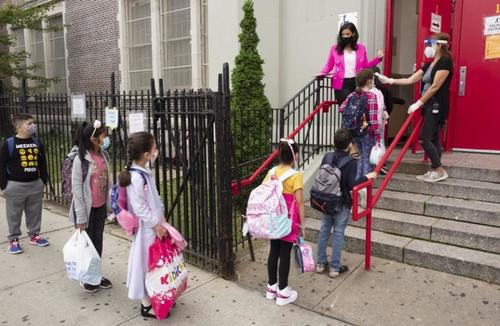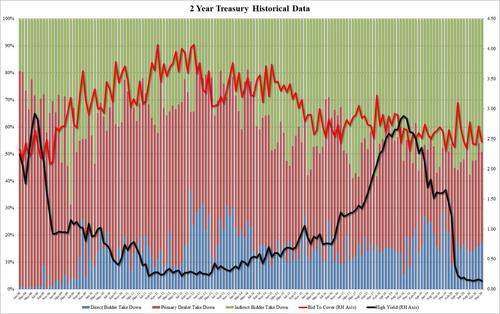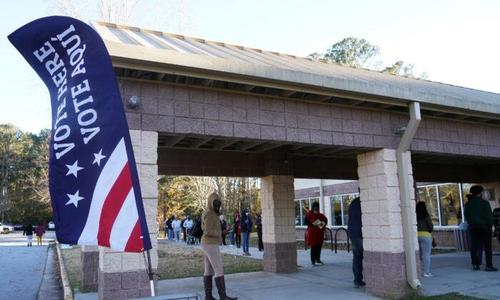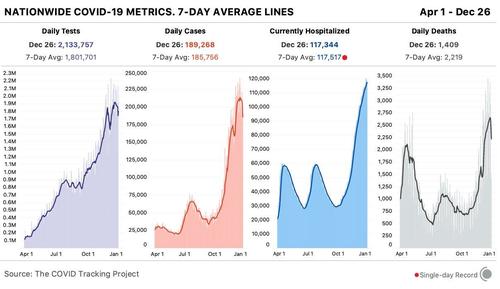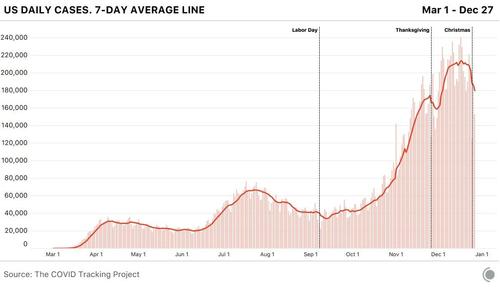There’s little doubt that 2020 will go down as an annus horribilis to be referenced with shudders in the future. Unless you’re part of the ruling class reveling in vast new powers or a tech company executive profiting from an online-dependent world, you’ve certainly had enough of viral pandemics, lockdown orders, economic privation, political polarization, street violence, and choose-your-doom elections.
Fortunately, 2020 is nearly at an end. Unfortunately, its events will leave one hell of a mark on the years to come.
Let’s start with COVID-19, which cast such a long shadow over the past year. It’s not gone, and it’s brought some mutant friends to the party in the United Kingdom and South Africa. So far, the new viral strains appear likely to respond to existing vaccines, so we shouldn’t have to put the pharmaceutical industry to another snap test too terribly soon. Then again, who knows what viral menaces will come our way in the months to come, tempting government officials to order us all to hide under the bed once again?
Speaking of those lockdown orders, it turns out that they were as much a product of China as COVID-19 itself. Last week, Professor Neil Ferguson—advisor to the British government until he was caught ignoring the restrictions he had recommended—admitted that Chinese policies inspired the stay-at-home orders, travel bans, and business closures that became de rigueur among public health professionals.
“It’s a communist one party state, we said,” Ferguson told the Times of London about the initial reaction to China’s draconian crackdowns. “We couldn’t get away with it in Europe, we thought… and then Italy did it. And we realised we could.” (UnHerd offers an unpaywalled summary.)
The totalitarian public health model has definitely won fans in the political class, if not among the public. It’s the go-to policy for pandemic response from California to France to Israel. Meanwhile, apparatchiks like Ferguson flout their own rules as the public engages in growing rebellion.
Despite revolts and simultaneous judicial pushback, you can expect politicians of the future to fondly remember the near-absolute power they exercised over personal lives and economic activity. They’re not going to want to give it up just because the date rolls over on the budgets they ignore.
“The central irony of the crisis may be that the very methods that liberal democracies are currently using to effectively fight the virus are the same tactics that authoritarian leaders use to dominate their people,” Andy Wang observed in the Harvard International Review. “The tools that have been temporarily deployed in the fight against a once-in-a-lifetime disease may become permanent.”
That’s especially unfortunate, given that after people’s initial reactions to the new virus, the year’s job losses, bankruptcies, and impoverishment were often a result of government mandates rather than private choices. “Google mobility data (averaged) for the 7 non-lockdown states and the 7 most heavily restricted states + DC … suggests the lockdowns, and not the virus, are the primary reason for the economic harm of the last 8 months,” writes economic historian Phil Magness.
That economic harm will stick around like, well, a viral infection. “COVID-19’s economic fallout may be with us for decades,” predicts the International Monetary Fund. Debt-fueled government spending intended to offset that fallout “is expected to raise borrowing costs, lower economic output, and reduce national income in the longer term,” warns the Congressional Budget Office.
The economic harm, which left people stressed and side-lined, also contributed to the social and political turmoil of 2020. That turmoil included justified protest against abusive law enforcement and calls for reform. Unfortunately, it also featured politically charged riots and deaths.
The long-building partisan divisions that fueled so much nastiness this year aren’t going anywhere soon.
“Voters who supported Biden and Donald Trump say they not only differ over policies, but also have fundamental disagreements over core American values,” Pew Research reported after an election that gave Democrats the presidency and also saw Republicans make gains in the House of Representatives. “Yet there is a sentiment with which large shares of both Biden and Trump voters agree: a feeling that those who supported the other candidate have little or no understanding of people like them.”
Actually, the alienation is a little deeper than that:
Twenty-four percent of likely U.S. voters “think Biden voters are America’s biggest enemy as 2020 draws to a close. The same number (24%) see China as enemy number one,” Rasmussen Reports noted earlier this month. “Nearly as many (22%) regard Trump voters as the biggest enemy.”
Don’t expect future elections to settle domestic hostilities any more effectively than did the 2020 election. Political scientist Morris P. “Fiorina says we are in an extended age of what he calls ‘unstable majorities’ because neither the Republican Party nor the Democratic Party is popular enough to get and hold enduring legislative power,” Nick Gillespie wrote in October. Fiorina “also expects ‘electoral chaos’ to characterize the 2022 midterms and the 2024 presidential election because the underlying conditions that produce such unstable majorities haven’t changed.”
So, if you’re a big fan of 2020’s political street theater, you can expect encore performances to keep coming your way for the foreseeable future.
That’s not to say that all of the lingering effects of this annus are necessarily horribilis.
The events of the past year have normalized remote work. That means a larger share of the population than in the past has the option of working from where they wish to live, rather than living where they have to work. Sure enough, some of the bigger, more-expensive cities are losing population, especially to small metro areas and suburbs.
Likewise, 2020 has hammered home the flaws and limitations of rigid, government-controlled education. Many families have been turning to private schools, homeschooling, and other education options of their choice rather than let their children languish in the hands of bureaucrats and union officials. That’s a big win for viewpoint diversity in lessons, as well as for kids overall.

from Latest – Reason.com https://ift.tt/34LBPgY
via IFTTT
